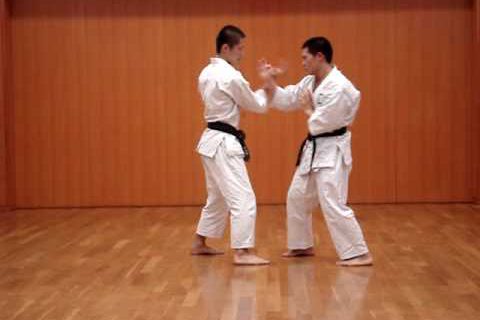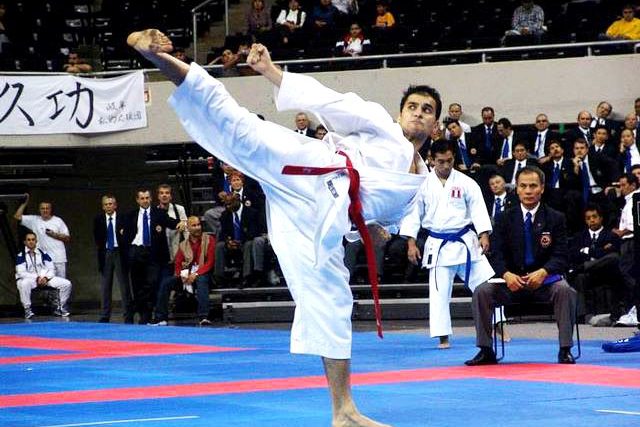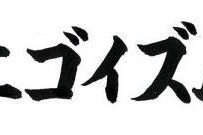This is the second part of “Mysticism in Karate”. Please read part 1 if you haven’t!
Okay, let’s continue, shall we?
In part 1 we discussed names of kata, or more specifically numbers in names of kata, and the connection to numerology. This time we will not look at the “label” of the kata, we will instead examine the content of the kata, and its connection to numerology (or mysticism if you prefer!).
First of all, have you ever thought about why there sometimes seems to be triplets of some techniques? Forgive me, I don’t mean sometimes, I mean almost always!
In almost every kata there is a series of techniques that you repeat in a 2:1 ratio. Right, left, right.
Let me briefly mention some katas that have this “feature”:
Pinan 1, 2, 3, 4 & 5, Jion, Bassai (all of the versions), Wansu, Kushanku (all of them too), Rohai (same here), Seisan, Sanchin, Suparinpei, Gojushiho, Shisochin, Sanseiru, Tensho, Unsu, Sochin, blablablah, and all other kata you can think of (about 50?). Almost all kata have a set of techniques that you do three times, always preferring the right side, in a 2:1 ratio.
Isn’t that strange?
Wouldn’t it be easier to just do the technique on one side? Okay, maybe we want to be evenly trained on both sides, so two times should be enough. One time on the right side, and one time on the left.
But three times?! Why?
Again, don’t look at me. I don’t know! But as always, I have some theories!
1. Predominant side
According to my top-secret sources, only 1 in 10 people is left handed. So the theory is this: Sure, we need to practise on left side and right side. An attack can come on any side, right? BUT… since most of us (read: 9 in 10) are right handed, we practise the right side one more time, making it three repetitions. And that’s it! We practise the move three times, (right, left, right) because we want to practise the predominant side (right) an extra time! Makes sense?
By the way, why do we have a predominant side? Couldn’t we just be equally good on both sides? Why has evolution decided that we should be better on one side, and why did it choose the right side? And if “right-handedness” is so good for the evolution, why are there some lefties? So many questions, so little time…
2. “Holy” number
Maybe we do techniques three times because the number three is extra good? At least in China the number three is considered a lucky-number.
Why?
Because if you pronounce “three” in Chinese you would say “saam”. And if you say “life” in Chinese you would say “saang”. They are almost the same! And that is the reason to why three is a *happy happy lucky number* in China. So because of this they incorporated the number three in kata? Who knows…
3. Broken rhythm
Maybe we do techniques in sets of three’s because we need to practise “broken rhythm” as it is called. You know, you do 1… pause… 2, and quickly 3! In theory, your adversary expects the techniques to have the same rhythm, but since you change it (as you are supposed to), you catch the opponent off guard with the 3rd move. And since the principle of broken rhythm is important in Karate, we practise it in kata like this, by having sets of three’s.
This was one of Bruce Lee’s favorite tactics.
4. Linking bunkai
Maybe we do “the three’s” because we want to link applications (bunkai) together? Maybe it’s just a practical, geometrical thing? Just like building a house, you need certain things to link together the pieces. And doing a technique three times maybe is just that? A simple way to establish a geometrical configuration neccessary for the kata to function properly?
This is perhaps the most boring theory…
Anyway, enough with the theories, I want facts! Cold hard facts, that slice through…wait a sec, didn’t I say this in part 1? Yeah I did. And we came to the conclusion that there are no facts!
We can only guess!
What do you think? Why are there “sets of three’s” in nearly every kata? There must be a good reason! I just gave you four, but there are more, some really crazy!
Think about it!
I actually have my own very secret theory… And it’s way better than all of the above.
Water-proof.
But like I said, it’s secret…
And with those words I end this “two-part-post” about “Mysticism in Karate”, that really was about “Numerology in Karate” but “Mysticism in Karate” sounded cooler.



5 Comments